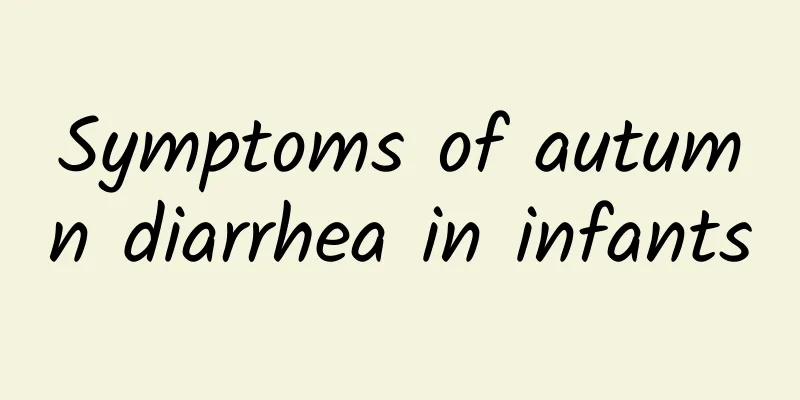Symptoms of autumn diarrhea in infants

|
Every autumn, many patients with diarrhea gather in pediatrics, especially very young babies. The probability of getting this disease is much higher than that of older babies. The reason is that the baby's gastrointestinal tract is not well developed and does not have a good resistance to external pathogens, or it may be caused by poor feeding. Now, let us understand the causes and symptoms of diarrhea in babies in autumn. Causes of autumn diarrhea in infants 1. Immature digestive system: The digestive system of infants and young children is immature and the enzyme activity is poor, but their nutritional needs are relatively high and the intestinal burden is heavy. If feeding is improper, such as adding too much starch or fat to the food, causing the composition to change, or eating too much at one time, it can cause digestive dysfunction and lead to diarrhea. 2. Immature immune function: The nervous system, endocrine system, circulatory system, liver and kidney functions of infants and young children are immature, their regulatory functions are poor, and their immune functions are not mature enough. When pathogens enter the body with contaminated food, diarrhea can easily occur. 3. Rotavirus infection: Infant autumn diarrhea is mainly caused by rotavirus infection (pathogenic microorganisms can enter the baby's digestive tract with contaminated food or water). This situation often occurs in artificially fed babies. If the utensils or food used for feeding are not sterilized or are poorly sterilized, there is a possibility of infection. The virus can also be transmitted through the respiratory tract or water sources, which often occurs from August to December, with the peak in October and November. 4. Large temperature difference: The temperature in autumn changes greatly, sometimes cold and sometimes hot. Colds, abdominal colds and various infections caused by climate change can also lead to diarrhea. Symptoms of autumn diarrhea in infants 1. The onset is acute, and the initial stage is often accompanied by cold symptoms, such as cough, nasal congestion, runny nose, and half of the children will also have fever, which is generally low-grade and rarely high-grade; 2. The frequency of bowel movements increases, about 10 times a day, more than 3 times a day should be considered autumn diarrhea, the stool is white, yellow or green egg drop soup-like, with a little mucus or pus and blood, no fishy smell; 3. Half of the children will experience vomiting. Most vomiting symptoms occur in the early stages of the disease, usually not exceeding 3 days; 4. People with severe diarrhea may experience symptoms of dehydration, such as obvious thirst, decreased urine volume, and irritability. The above is about the reasons why infant diarrhea often occurs in autumn and winter and its symptoms. I believe that after reading, parents will have a deeper understanding of this disease, so that they can better prevent and care for it, avoid frequent diarrhea in babies, and affect their healthy growth. |
<<: What are the symptoms of rising fire?
>>: What are the symptoms during pregnancy?
Recommend
Treatment of sciatic nerve compression caused by lumbar disc herniation
If we want to treat the disease of lumbar disc he...
A 30-year-old female had a painful swelling on her vulva for a week.
Women's physical health is important, but the...
Throat congestion, chest tightness, shortness of breath
Many people often experience throat congestion an...
Why does my face hurt?
There are many reasons for facial redness and pai...
What causes lack of breath?
Do you always feel that you don’t have enough ene...
Best rehabilitation plan for Achilles tendon rupture
When the Achilles tendon ruptures, surgical treat...
Do men get erections while sleeping?
Erection is a common male response. It is normal ...
Do you need to soak barley in water before frying it?
Job's tears has many uses in daily life. Firs...
Penis peeling without pain or itching
The glans is an important part of the male reprod...
How to fill a small hole on the face
A smooth and flawless face is what many women wan...
Strong taste! Who says foreigners don’t eat animal organs!
Who says that only Chinese people eat offal? Ther...
What are the effects of Tianqi Danshen powder
Panax notoginseng powder is usually used for brui...
How long does it take to recover from rhabdomyolysis?
Rhabdomyolysis is a relatively serious disease. I...
Can Chinese medicine be heated?
Everyone must have been drinking Chinese herbal d...
Lumbar disc herniation causing nausea and vomiting
Lumbar disc herniation will not cause nausea and ...









